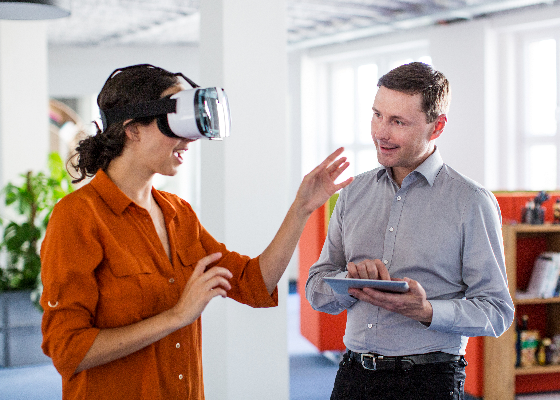Virtual Reality is becoming more prevalent, especially in the past two (2) years when it comes to education. Using VR technology, schools have introduced learning in ways where now apps & programs try to encourage deeper learning. From the conventional ways of teaching using whiteboards, computers, slides and projectors to a simple yet interesting pair VR goggles.
Ever since the release of Google Cardboard in 2014, a lot of people have had access to AR or Augmented Reality for learning. Considered as an introduction to VR, AR has made it possible to experience a virtual world where a lot of things are possible. With this platform, education has become easier to explain and comprehend where students who thrive with the aid of the user’s visual and hearing senses. It is the simulation experience that makes learning more effective and it can create a lasting impact for the students.
From creating a virtual world of pre-historic settings where users can experience a T-Rex walking pass to an era where the simulation can be in the middle of a forest – all these are possible in the virtual world; and that is the entertaining part. Google now has field trips called Google Expeditions which is one of the best ways to get started using virtual reality in education.
Currently Using VR in Education
For a more complex type of learning, schools use VR education for SPED or special education. It has previously been utilized for higher-levels of learning like in aeronautics and now in medicine. From the evolution of VR education to catering to younger students, the possibilities are now becoming more advanced than ever before.
Here is a small list of educational institutions we put together that are currently using VR in education:
• University of British Columbia (Vancouver) is in the phase of trying out virtual classes set in a virtual lecture halls
• The Arlington Science Focus School (Arlington, VA) is more into field trips
• Drury University (Springfield, MO) uses virtual tools in their architecture classes
• The Jackson School (Victoria, Australia) caters to students with special needs
• UCLA are in neurosurgery type of VR classes
This is just a small list and there are so many more educational institutions from all levels are now using virtual reality in education for a variety of topics and subjects.
Although most of educators are still skeptical of the practicality, virtual learning is continually proving its effectiveness with the latest applications and platforms that have recently emerged. Within just a few years, we have seen steady growth in seeing VR education in classrooms, universities and colleges worldwide. Users are now ranging from grade school students to working professionals and the number of valuable applications are steadily increasing.
Though the VR goggles and accessories are still generic for use in all platforms of entertainment, education and work, it is more convenient that way. For manufacturers and developers to co-create products is the general goal. Creating specific hardware may not be the best path forward because it could potentially slow or decrease the full convenience of owning proprietary VR equipment.
VR Availability and Affordability
VR adoption rates in schools are steadily increasing and the public has strongly supported products that are now available for use in a wide variety of topics. PlayStation VRs, Google Cardboard VRs and other branded VRs are trying their best to develop their ecosystems for VR and have their apps and programs available across all platforms. With increasing access to demo releases and free apps, the number of users is continually growing and gaining followers.
Affordability varies and the over-all experience each user will have can still vary significantly. Whether it is in AR or MR type of virtual reality technology, the goal remains the same – to provide simulations that will help make the most out of the time invested and experience from their VR equipment. The same goes with VR education, where educators are beginning to leverage several new opportunities and benefits made possible by VR.
The good thing about this technology is it can be used at home and of course in the classroom. Downloading educational apps and programs is also very easy. There may be apps and programs that are only available for schools that may costs a fortune, but there are still a significant amount of other options available in online stores that can help you decide what is best for your classroom and students.
The possibilities are endless in VR education!
Do you have a VR education app that you would like to share? Tell us in the comments or connect with us, we would love to hear from you! Thank you for visiting VRedtech.com! Please bookmark us and visit again soon for the latest news, information and valuable content with a focus on Virtual Reality in Education.

